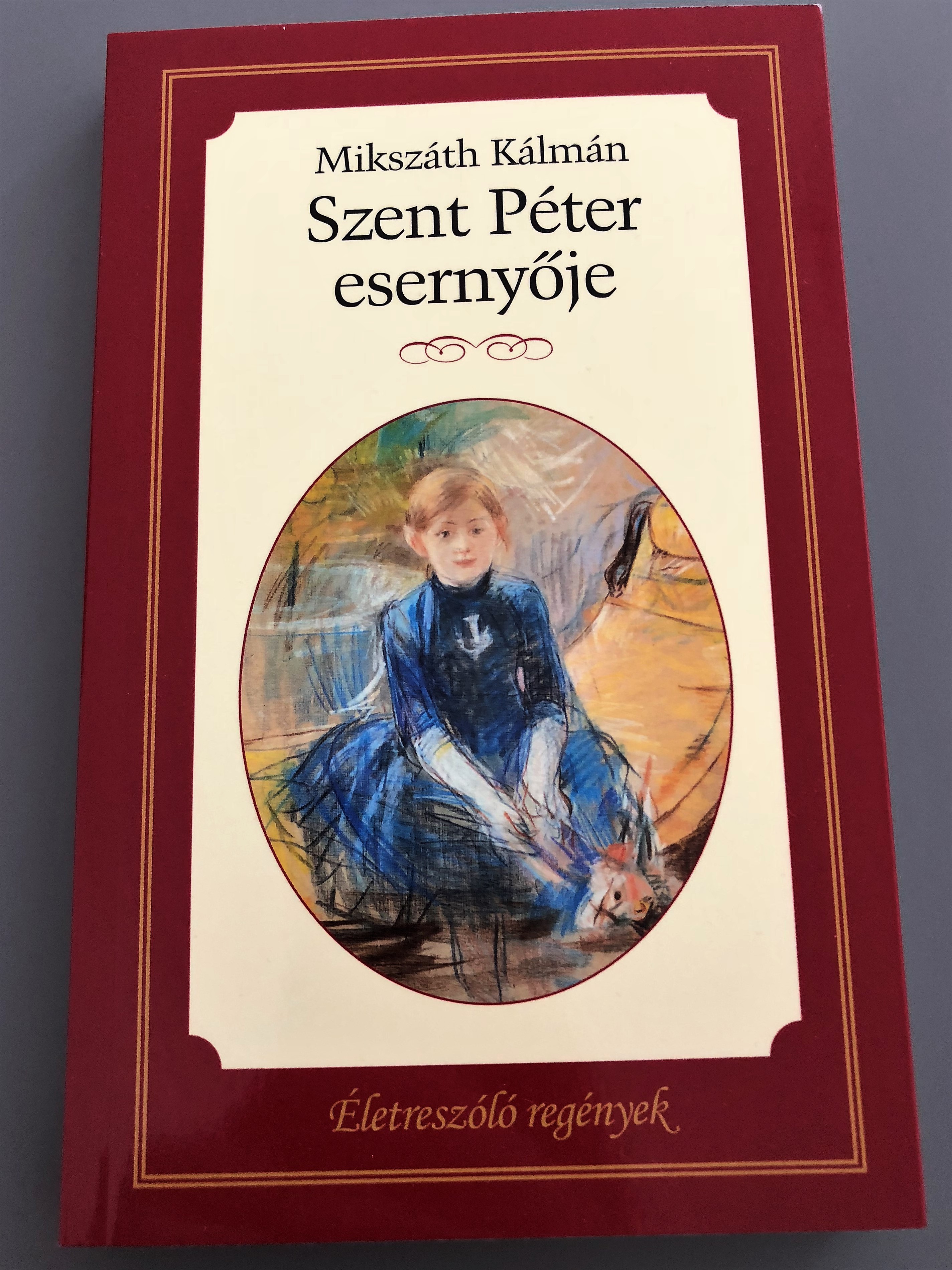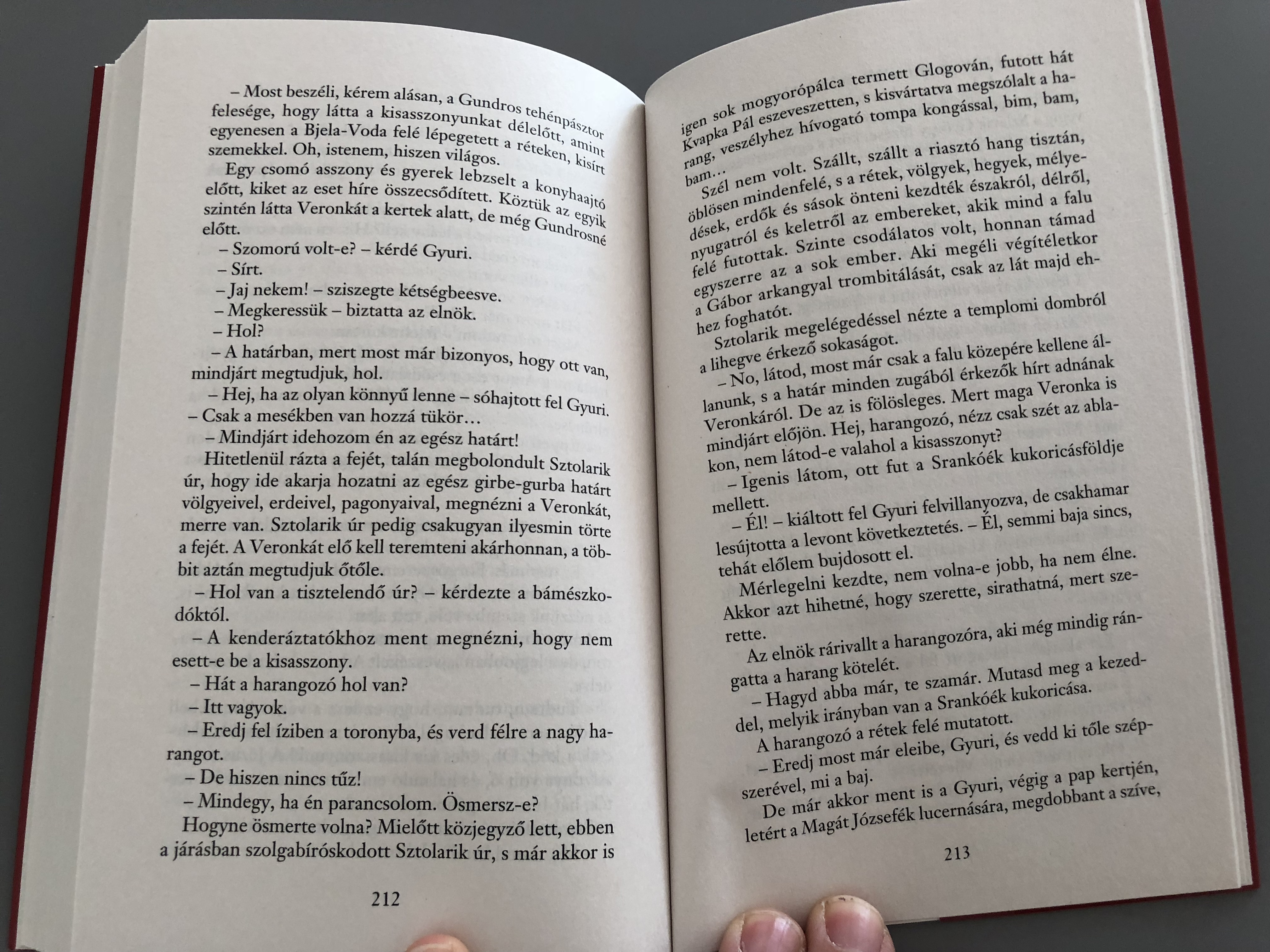Description
Szent Péter esernyője By Mikszáth Kálmán
Életreszóló regények
Details | Adatok
- Format | Kötés: Paperback
- Publication Year | Kiadás éve: 2014
- ISBN-13: 9789630980494 / 978-9630980494
- ISBN-10: 9630980495
- Pages | Oldalszám: 222
- Language | Nyelv: Hungarian / Magyar
- Publisher | Kiadó: Kossuth Kiadó
Overview | Áttekintés
Mikszáth Kálmán's Szent Péter esernyője is a timeless Hungarian classic that blends humor, charm, and a touch of mystery. This novel, part of the Életreszóló regények series, tells the heartwarming story of a small-town priest and the miraculous appearance of Saint Peter's umbrella, which becomes a symbol of divine providence and community spirit.
Mikszáth Kálmán Szent Péter esernyője című műve egy időtálló magyar klasszikus, amelyben humor, báj és némi rejtély fonódik össze. Az Életreszóló regények sorozat részeként megjelent regény egy kisvárosi pap történetét meséli el, valamint Szent Péter csodálatos esernyőjének megjelenését, amely az isteni gondviselés és a közösségi összetartás szimbóluma lesz.
About the Author | A szerzőről
Mikszáth Kálmán (1847–1910) was one of Hungary’s most celebrated authors, journalists, and satirists, often compared to Jókai Mór for his narrative skill and humor. Born in Szklabonya (modern-day Slovakia), Mikszáth’s works often reflect the lives of Hungarian peasants, artisans, and the lesser nobility. His wit, social commentary, and ability to craft relatable characters have solidified his place as a cornerstone of Hungarian literature.
Mikszáth Kálmán (1847–1910) Magyarország egyik legünnepeltebb írója, újságírója és szatirikusa, akit gyakran hasonlítanak Jókai Mórhoz mesélőtehetsége és humora miatt. Szklabonyán (ma Szlovákia) született, művei gyakran tükrözik a magyar parasztok, iparosok és kisnemesek életét. Szellemes stílusa, társadalmi kommentárjai és szerethető karakterei a magyar irodalom alapkövévé tették.
Key Features | Kiemelkedő jellemzők
-
A delightful mix of humor, folklore, and mystery.
-
Reflects Mikszáth’s masterful storytelling and social insights.
-
A must-read for fans of Hungarian literature and cultural history.
-
A humor, néphagyományok és rejtélyek elbűvölő keveréke.
-
Mikszáth mesteri mesélőtehetségének és társadalmi meglátásainak tükröződése.
-
Kötelező olvasmány a magyar irodalom és kultúrtörténet rajongói számára.
Interesting Facts | Érdekességek
-
The novel is a cornerstone of Hungarian literary heritage and is widely taught in schools.
-
Mikszáth uses the mysterious umbrella as a symbol of faith and miracles in everyday life.
-
The humor and relatable characters make this book beloved by generations of readers.
-
A regény a magyar irodalmi örökség alapköve, és széles körben tanítják az iskolákban.
-
Mikszáth a titokzatos esernyőt a hit és a mindennapi élet csodáinak szimbólumaként használja.
-
A humor és a szerethető karakterek generációk óta kedvelt olvasmánnyá tették a könyvet.
Hashtags
#SzentPéterEsernyője #MikszáthKálmán #HungarianClassics #HungarianLiterature #KossuthKiadó #ÉletreszólóRegények




































